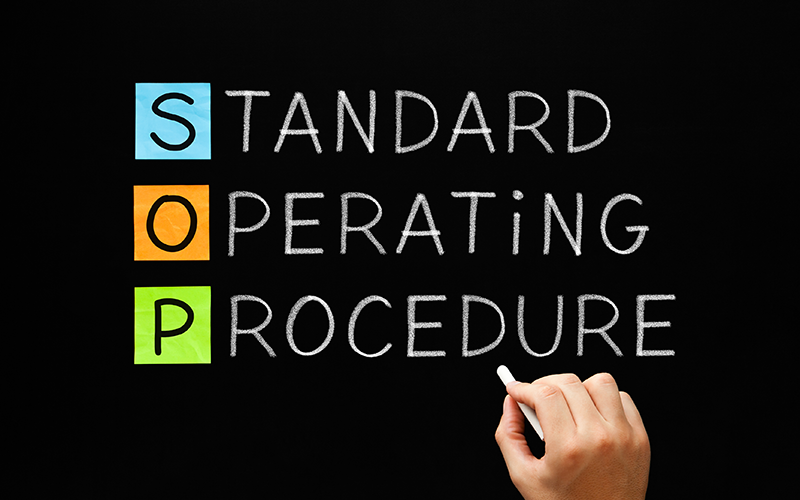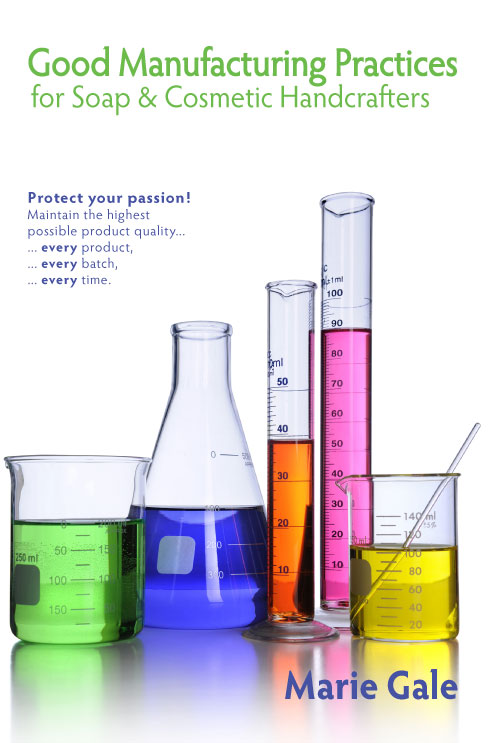Good manufacturing practices cover anything and everything that could affect your product quality. It’s not just your master formula and how you make the products – it also includes all the OTHER things that make a difference. Standard Operating Procedures (SOPs) cover, your workspace, helpers, equipment, facilities, safety procedures, documentation, and quality control, which all play a part in whether or not your products come out perfect.
You have probably already set up procedures that work for you. You know how you clean your workspace and what you use to clean it with so your product doesn’t get contaminated. You know how to run the equipment you have, and probably how to maintain it in good working order.
Standard Operating Procedures (or SOPs) are those procedures. The trick is making sure you have them written down! (Remember, a major part of GMP is not just knowing what to do, it’s having it documented and then following that documentation!).
Here’s a list of some suggested SOPs that you should consider writing down. They are a good place to start when you are putting your GMP into place.
General
These items cover setting up your documentation and how you keep your records:
- Archiving Original Documents
- How to Write a Standard Operating Procedure
- Numbering Systems
- Filing Systems
- Back-up Procedures
- Offsite Backup Storage Procedure
Equipment
Keeping track of your equipment, making sure it is in good working order and used correctly by anyone who is authorized to use it.
- Equipment Operation Procedures
- Equipment Maintenance Procedures
- Equipment Cleaning Procedures
- Scale Calibration Procedures
- Authorized Use of Equipment
Premises
Making sure that your workspace is set up correctly, well maintained and that nothing in it could adversely affect your products.
- Allocation and Use of Space
- Cleaning Procedures
- Approved Cleaning Supplies
- Pest Control
- Waste and Trash Handling
Personnel
Dealing with helpers (and even yourself) when it comes to making sure they know what to do and how to do it correctly and safely.
- Training Newly Hired Staff
- Staff Training Records
- Personal Training Log
- Protective Gear in Production Areas
- Hygienic Practices in Production Areas
- Access of Unhealthy Individuals to Production Areas
Materials
Keeping track of your ingredients and packaging materials to ensure they are of high quality when used in your products.
- Standards for Assigning Item Numbers
- Supplier Selection Criteria
- Numbering System of Incoming Materials
- Storage of Ingredients and Packaging Materials
- Method for Inventory Turnover
- Water Quality Assurance
Production & Finished Products
Standards for your production and finished products, including tracking inventory and making sure that nothing is damaged when being moved or stored.
- Assigning Master Formula and Product Numbers
- Storage of Finished Products
- Moving Inventory To and From Shows
- Inventory Selection: Use Oldest First
- Verifying Inventory Amounts
- Correct Packaging of Product Shipments
- Shipping Temperature-Sensitive Products
Quality Control
All the things that have to do with keeping your quality high and handling any situations where product quality wasn’t quite up to snuff.
- Sampling Procedures
- Storage for Retained Samples
- Process for Changing Existing Procedures
- Internal GMP Audit Procedure and Schedule
- How to Handle Returned Product
- Investigating and Resolving Complaints
- Complaint Documentation and Filing
- Complaint Review
- Recall Process
These aren’t all of the SOPs that you might need (and some of the ones listed might not apply to you). But it gives a good place to start when you are beginning to document the procedures you have in place to ensure that your product quality is as high as it can possibly be—every batch, every bar, every time.



Leave a Reply